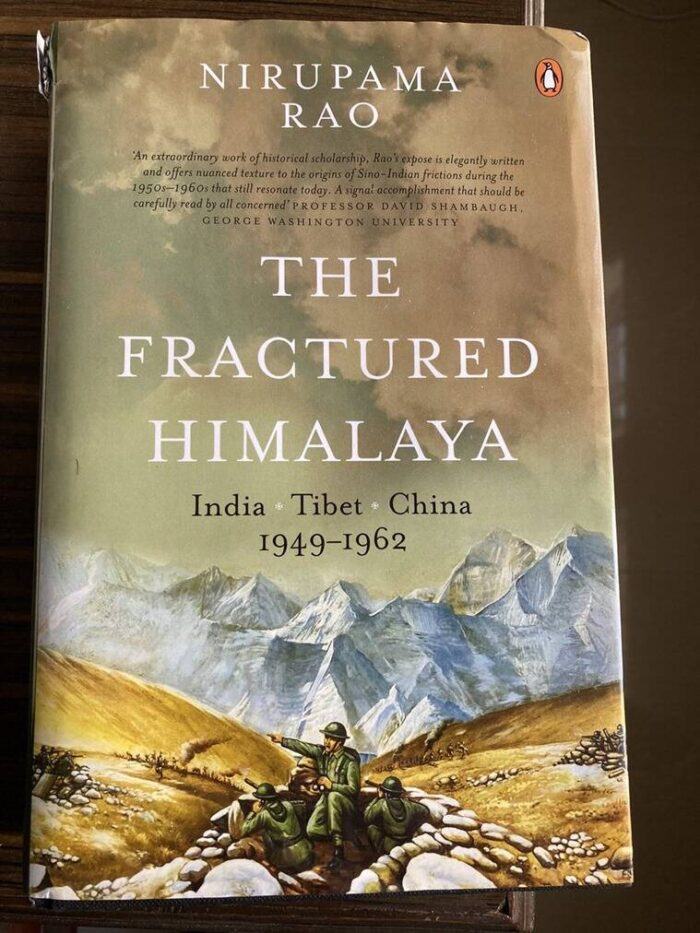
Chapter 13 : Disputed Frontier, Divided Histories
The year 1959 , which was at the centre of the tragic events in Tibet, also became the setting and stage for the full- blown appearance in the public domain of a serious boundary dispute between India and China. The flight of the Dalai Lama from Tibet to India and their tensions it generated were but a prelude to a succession of events that widened the India- China rift . It became increasingly clear that most of these vents were centered around the question of what was a long and disputed boundary. India under Nehru had long regarded that this boundary was not open to discussion. After the 1954 Agreement with China on Tibet, the Prime Minister had unilaterally decided that this India – defined boundary of close to 4, 000 Km would be shown as a firm and definite line on all published Indian maps . There could be no ambiguity , Nehru felt, about this boundary. Peace on these borders could be maintained, on his view, by pursuing a policy of friendship with China. The slogan of ‘Hindi – Chini Bhai- Bhai’ became the siren-call. It was delusional diplomacy and its wages would prove costly for India . For the Chinese , border problems and differences ‘ left over from history’ needed to be resolved through negotiation and – unlike India at the time – they were prepared to take the line that a boundary dialogue did not exist.
In 1958, the existence of the Aksai Chin highway across territory shown as part of Ladakh in India’s maps had been raised by India with China in the informal diplomatic note of 18 October 1958. The Chinese had replied to counter the Indian claim that the road passed through Indian territory. The dispute now revealed was just the beginning of a long sequence of diplomatic exchanges between the two countries, and would uncover the wide perceptional gap in approaches to the definition of the concepts concerning the boundary they shared. In his first letter on the dispute to Zhou Enlai, of December 1958, Nehru said there was no question of ‘ large parts of India bein anything but Indian’. Nehru had suspended disbelief when he took Zhou at his word when the latter told him during their meetings from 1954 onwards that China had not had the time to revise boundary alignments shown in old maps or that China intended to accept the McMahon Line as a reality after consulting with Tibetan authorities. Nehru’s illusions would be shattered as 1959 ran to course and in the years that followed. The experience would destroy him.
Speaking in Parliament ( the Lok Sabha) on 28 August 1959 , in answer to a question regarding occupation of Ladakhi territory by China, Nehru disclosed that an Indian reconnaissance party had been detained by the Chinese at Khurnak Fort inside Indian territory, a claim disputed by China. The Prime Minister was still reluctant to conceded that the Chinese had occupied Indian territory in Ladakh saying that ‘it would be hardly correct to say that our area is under occupation of the Chinese, that is , under any kind of fixed occupation’. But he did agree that China had built road across the Aksai Chin Which India claimed as a part of Ladakh. However, he added that the are involved was ‘extraordinarily remote , almost inaccessible’. Asked by an irate Member of Parliament whether any nation ‘ can come and build roads and camp there’ , the Prime Minister seemed to draw a distinction between borders and frontiers, saying that in some areas, there was no doubt ‘ from any side’ about the alignment of the border, but but in other parts ‘ it is very difficult even in a map to indicate it’ , and there were parts where ‘ there had been no demarcation in the past’.
All this seemed to fly in the face of, and directly contradict , the decision taken in 1954 by Nehru himself to show every part of India’s border with China as fixed and well – determined and not open to discussion, But Indian policy making circles were clearly perturbed by the launch of ‘ an active policy of violation of the international frontier and intrusion into our territory ‘ as a message from the Foreign Secretary to Indian Missions abroad would indicate. He attributed the Chinese moves on the border ‘ to serious misunderstanding of our intention towards Tibet’ . The Prime Minister himself, writing to his sister Vijaya Lakshmi Pandit , the High Commissioner in London, said India intended to take firm line on the issue but would try to avoid any step which might lead to break with China. In September , 1959, he told Parliament that his government was preparing a kind of a white paper which would detail all correspondence with the Chinese government since 1954 and that this would soon be placed before the House . It was a fateful decision made no doubt in the interest of full transparency of approach, as Nehru , the life- long democrat , would have willed, but it would, as subsequent events showed, completely do away with any scope for flexibility or give-and-take in India’s approach towards China on the question of their shared boundary. The first white paper was released to Parliament on 7 September 1959.
The Chinese approach, as outlined in several letters addressed by Premier Zhou Enlai to Nehru was that the ‘boundary question is a complicated question left over by history’. The onus for the problem was placed on British machinations in Tibet when India was under the British rule. What China objected to was that India ‘ demanded’ that this British policy of ‘aggression against China’ should now be recognized ‘ as the foundation for the settlement of the Sino – Indian boundary question’. The Chinese view that India and China should arrive at a settlement of this question taking into account bot the historical background and existing actualities, and that pending this, the status quo along the border should be maintained. Zhou maintained that he boundary had never been formally delimited.
(Excerpted with Permission From Penguin Random House India)
[the_ad id=”41101″]


















